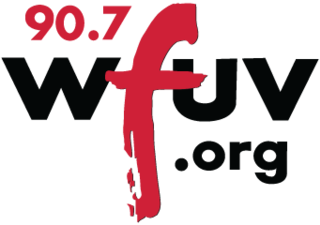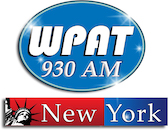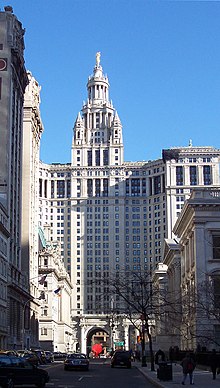Minnesota Public Radio (MPR) is a public radio network for the state of Minnesota. With its three services, News & Information, YourClassical MPR and The Current, MPR operates a 46-station regional radio network in the upper Midwest.

KUOM – branded Radio K – is a daytime-only, non-commercial educational college/alternative rock radio station licensed to serve Minneapolis, Minnesota. Owned by the University of Minnesota, Twin Cities, the station is operated by both faculty and students. Studios are located at the Rarig Center on the University of Minnesota campus.
WQXR-FM is an American non-commercial classical radio station, licensed to Newark, New Jersey and serving the North Jersey and New York City area. It is owned by the nonprofit organization New York Public Radio, which also operates WNYC AM and FM and the four-station New Jersey Public Radio group. WQXR-FM broadcasts from studios and offices located in the Hudson Square neighborhood in lower Manhattan and its transmitter is located at the Empire State Building.

KMNB is an American commercial FM radio station in Minneapolis-St. Paul that carries a country radio format. KMNB is owned by Audacy, Inc. Its main transmitter is located on the KMSP Tower in Shoreview, Minnesota, with backup facilities on the nearby Telefarm installation. The station's studios are located on Second Avenue South in Downtown Minneapolis.

KING-FM is a non-commercial classical music radio station in Seattle, Washington. It is owned by Classic Radio, a nonprofit organization. The studios and offices are on Mercer St in Seattle. KING-FM holds periodic on-air fundraisers to help support the station through listener contributions.

On the Media (OTM) is an hour-long weekly radio program hosted and edited by Brooke Gladstone that reaches about 1.6 million listeners across the United States. It is produced by WNYC-New York Public Radio. OTM is first broadcast on Friday evening over WNYC's FM service and is syndicated nationwide to more than 400 other public radio outlets. The program is available by audio stream, MP3 download, and podcast. OTM also publishes a weekly newsletter featuring news on current and past projects as well as relevant links from around the web.

WFUV is a non–commercial radio station licensed to New York, New York. The station is owned by Fordham University, with studios on its Bronx campus and its antenna atop the nearby Montefiore Medical Center. WFUV first went on the air in 1947. It became a professional public radio station in 1990 and is one of three NPR member stations in New York City. Its on-air staff has included radio veterans Dennis Elsas, Vin Scelsa, Pete Fornatale, and Rita Houston.
WFME is a non-commercial, religious-formatted AM radio station licensed to New York, New York, broadcasting with 1,000 watts, under a special temporary authority (STA). The station is owned and operated by Family Radio, a Christian radio ministry based in Nashville, Tennessee.

WCCO is a commercial AM radio station located in Minneapolis, Minnesota, and owned by Audacy, Inc. Its studios and offices are located on Second Avenue South in Downtown Minneapolis. WCCO features a talk radio format, with frequent newscasts and sports programming. Local hosts are heard most hours of the day and evening, including Chad Hartman, Vineeta Sawkar, Paul Douglas, Jordana Green and Adam Carter, Jason DeRusha, and Henry Lake. Overnight, two syndicated shows are carried: Our American Stories with Lee Habeeb and America in the Morning with John Trout. World and national news is supplied by CBS News Radio. WCCO is the flagship radio station for the Minnesota Twins baseball team and the Minnesota Timberwolves basketball team.

WKCR-FM is a radio station licensed to New York, New York, United States. The station is owned by Columbia University and serves the New York metropolitan area. Founded in 1941, the station traces its history back to 1908 with the first operations of the Columbia University Radio Club (CURC). In 1956, it became one of the first college radio stations to adopt FM broadcasting, which had been invented two decades earlier by Professor Edwin Howard Armstrong. The station was preceded by student involvement in W2XMN, an experimental FM station founded by Armstrong, for which the CURC provided programming. Originally an education-focused station, since the Columbia University protests of 1968, WKCR-FM has shifted its focus towards alternative musical programming, with an emphasis on jazz, classical, and hip hop.

WPAT, is a radio station licensed to Paterson, New Jersey, with a brokered programming format. WPAT is owned by Multicultural Broadcasting, and its studios are located in New York City, in Manhattan's Financial District. The station's four 380 feet (120 m) transmitting towers are located in Clifton, New Jersey.
Alabama Public Radio (APR) is a network of public radio stations based in Tuscaloosa, Alabama, United States, that serves roughly the western half of the state of Alabama with classical music, folk music, and nostalgic music programs, as well as news and feature programs from the National Public Radio (NPR), Public Radio International (PRI), and American Public Media (APM) networks. The network is operated by the University of Alabama, with studios in Tuscaloosa.

WHCN is a commercial radio station licensed to Hartford, Connecticut. It broadcasts a classic hits radio format for the Hartford, Waterbury and New Haven areas, and is owned by iHeartMedia, Inc. It is branded "The River 105.9," a reference to the Connecticut River. Its studios and offices are located on Columbus Boulevard in Hartford.

WFAE is a non-commercial public radio station in Charlotte, North Carolina. It is the main NPR news and information member in the Charlotte region. The station's main studios and offices are at One University Place in the University City neighborhood of northeast Charlotte. The WFAE Center for Community Engagement is located at 301 E. 7th Street in Uptown Charlotte, where live shows and other community gatherings are held.

New York Public Radio (NYPR) is the owner of WNYC (AM), WNYC-FM, WNYC Studios, WQXR-FM, New Jersey Public Radio, Gothamist, and the Jerome L. Greene Performance Space. Combined, New York Public Radio owns WNYC (AM), WNYC-FM, WQXR-FM, WQXW, WNJT-FM, WNJP, WNJY, and WNJO.

WNYC-FM (93.9 MHz) is a non-profit, non-commercial, public radio station licensed to New York City. It is owned by New York Public Radio along with WNYC (AM), Newark, New Jersey-licensed classical music outlet WQXR-FM (105.9 MHz), New Jersey Public Radio, and the Jerome L. Greene Performance Space. New York Public Radio is a not-for-profit corporation, incorporated in 1979, and is publicly supported through membership, development and sponsorship. The station broadcasts from studios and offices located in the Hudson Square neighborhood in lower Manhattan. WNYC-FM's transmitter is located at the Empire State Building. The station serves the New York metropolitan area.

WNYC is a nonprofit, non-commercial, public radio station licensed to New York, New York. The station is owned by New York Public Radio along with sister stations WNYC-FM and Newark, New Jersey–licensed classical music outlet WQXR-FM (105.9 MHz). It is a member of NPR and carries local and national news/talk programs. Some programming is simulcast on WNYC-FM and at other times different programming airs on each station.

John Schaefer is an American radio host and author. A longtime host at WNYC, Schaefer began hosting the influential radio shows New Sounds in 1982 and Soundcheck in 2002, and has produced many different programs for other New York Public Radio platforms. Schaefer is also the author of the book New Sounds: A Listener's Guide to New Music, first published in 1987.

WFMT is a commercial FM radio station in Chicago, Illinois, featuring a classical music radio format. It is managed by Window to the World Communications, Inc., owner of WTTW, Chicago's Public Broadcasting Service (PBS) member station. WFMT seeks donations on the air and on its website. The studios and offices are on North Saint Louis Avenue in Chicago.

Laura Ruth Walker is an American executive and current President of Bennington College. From 1995 to 2019, Walker was President and CEO of New York Public Radio (NYPR), a nonprofit media organization that operates WNYC, WNYC Studios, classical WQXR-FM, the website Gothamist, New Jersey Public Radio, and The Jerome L. Greene Performance Space. The organization produces programs for local and national audiences, including The Brian Lehrer Show, Radiolab, More Perfect, On The Media, Nancy, The New Yorker Radio Hour, Trump, Inc., Death, Sex & Money, Snap Judgment, Here’s the Thing with Alec Baldwin, All Of It, The Takeaway, Caught, The United States of Anxiety, Aria Code, Carnegie Hall Live, and 2 Dope Queens, reaching an average audience of 23.4 million people each month. New York Public Radio received ten George Foster Peabody Awards and five Alfred I. duPont awards during her tenure.

















